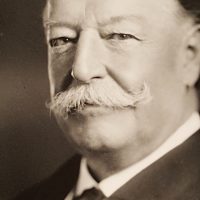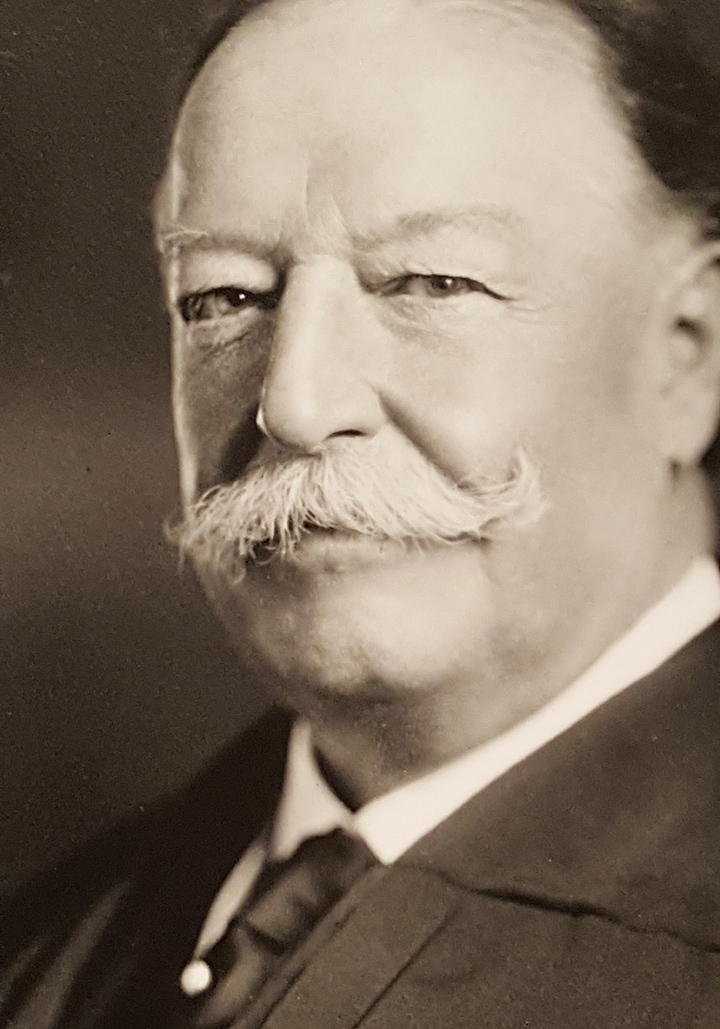Column: The honorable Mr. Taft
Commentary by Jonathan Matthes
If you’ve been following along with “Inaugurally Addressed” you’ll remember how I didn’t spend much time talking about William Henry Harrison’s death. I had to bring it up because if I didn’t, the story would have felt incomplete.

William Howard Taft is the same.
Yes, he got stuck in a freakin’ bathtub.
Who hasn’t had that happen?
Believe it or not, getting stuck in a bathtub was not the high point in the life of Will Taft. Neither was his time as president. It wasn’t his life’s ambition, like it is for almost everyone else who seeks the office, and it really didn’t go that well. He was happy to leave. So like Taft we are going to move on.
This column is about what you do when you’re done being president of the United States, which is an interesting question if you give it some thought. What could you possibly do that wouldn’t be a let down?
In fairness, a lot of presidents didn’t really have a chance to find out. Twenty-one presidents either died while in office or within a decade after leaving. And many of the 23 remaining presidents simply retired from the public eye.
William Howard Taft fit none of these categories.
Taft became chief justice of the United States.
He was always happiest as a judge. Politics had too much gray area, but being a judge afforded Taft the opportunity to do what he did best: deliberate, mull things over and look at every side of an issue. He didn’t lack ambition, but his ambition was directed to one thing: becoming chief justice.
Taft actually twice turned down a position as an associate justice. He was serving as governor general in the Philippines and felt that work was too unimportant. Then, after his presidency ended, he would only accept the chief justice position — which made sense on many levels, one being he had appointed most of the Supreme Court justices.
His dream came to fruition when, in 1921, Warren Harding nominated him for chief justice. He was confirmed the same day.
His time on the Supreme Court would be much more productive than his time as president.
Before Taft arrived, the rule was that the Supreme Court couldn’t pick and choose which cases it would hear, which meant that there was a five-year backlog of cases when Taft arrived.
He worked with Congress, in 1925, to create the Certiorari Act, which allowed the court discretion to select which cases to hear. This is the same act the court uses today when deciding to hear cases.
Next came Myers vs. U.S., which answered the question if the president had the power to remove people that had been appointed to an executive office without approval by the Senate. Taft wrote the majority decision; yes, the president didn’t need Senate approval to remove someone. This had been an issue for Taft when he was president, so he must have delivered the decision with a smile.
Under Taft, the Supreme Court learned to function more fluidly. He modernized it. He almost always ruled in the majority opinion and wrote more than his fair share of decisions. He had a good working relationship with the other justices, which was no small feat since one of his associates, Louis Brandeis, had railed against him during his presidency.
If you’re ever in Washington, and looking around for any monuments to Taft, stop in front of the Supreme Court building. It exists because of Taft.
Being president helped Taft be a better chief justice. It helped him execute the office more efficiently, but it also gave him connections in Congress that few chief justices had before. He used those connections for the Certiorari Act. He also used those connections to help convince Congress that the Supreme Court should have its own building.
He also got the Supreme Court its own building. Previously., the court was shuffled around inside the U.S. Capital in Washington, D.C. In 1929, in one of his last acts as chief justice, Taft petitioned Congress for a space exclusively for the Supreme Court.
The building would not be completed until 1935, nearly five years after Taft’s death. But when it was finished, on the pediment of the building, above the phrase “Equal Justice Under Law”, are six figures. The one on the left, that’s Will Taft as a youth.
Taft left the presidency in near disgrace. Heartbroken, his long friendship with Theodore Roosevelt was broken beyond repair. But for Taft, there was a happy ever after. He only lived another month after leaving the Supreme Court, but when his last breath was exhaled, it was done so in complete satisfaction. The satisfaction felt by a man who finally lived his dream.
Sources:
Pari Arnold, Professor of Political Science at the University of Notre Dame
The Miller Center of Public Affairs, the University of Virginia
Reggie Murray, Park Ranger at the William Howard Taft Historical Site
Chief Justice John Roberts, 2004 Dedication of Ohio Judicial Center
Lillian Cunningham, the Washington Post, “Presidential” Podcast




